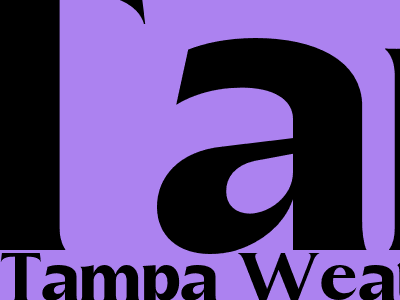
Tampa Weather
Guide to Optimizing Your Blogger Blog Posts for SEO and Google Ranking
Introduction
In today's digital landscape, having a strong online presence is crucial for businesses and individuals alike. As a leading blog-hosting platform, Blogger provides users with the tools they need to create and share content with the world. However, to ensure your blog posts reach a wider audience and rank highly in search engine results, it's essential to optimize them for search engine optimization (SEO). This comprehensive guide will provide you with step-by-step instructions on optimizing your Blogger blog posts for SEO, helping you drive organic traffic, increase visibility, and achieve your online marketing goals.
Understanding SEO and Its Importance for Blogger
SEO stands for search engine optimization, a process of making your website or blog more visible in search results. By optimizing your blog posts for SEO, you can improve your chances of appearing on the first page of search results when users enter specific keywords or phrases related to your content. This increased visibility can significantly increase website traffic and generate leads.
Keyword Research: The Cornerstone of SEO
Effective keyword research is the foundation of successful SEO optimization. Before you start writing a blog post, take the time to identify relevant and high-ranking keywords that your target audience is searching for. Consider using keyword research tools like Google Keyword Planner or Ahrefs to uncover the most relevant keywords and phrases for your niche. Once you have a list of target keywords, incorporate them naturally into your blog post's title, headings, and content. However, avoid keyword stuffing, as it can negatively impact your ranking.
Structuring Your Blog Post for SEO
The structure of your blog post plays a vital role in SEO. Start by creating a compelling headline that accurately reflects the content of your post and includes a relevant keyword. Structure your blog post using headings and subheadings to break up the text, making it easier for readers to scan and understand the main points. Use H1 for the main headline, H2 for subheadings, and H3 for further subdivisions. This clear structure helps search engines understand the hierarchy and context of your content.
Optimizing Your Blog Post's Content
The quality of your blog post's content is paramount for both readers and search engines. Create unique, informative, and engaging content that provides value to your readers. Structure your content in short and concise paragraphs, each focusing on a specific topic or idea. Use bullet points, lists, and images to break up the text and make it more visually appealing. Well-written content not only improves readability but also signals to search engines that your blog post is high-quality and relevant to users.
Using Images and Alt Text
Images can enhance the user experience and make your blog post more visually appealing. However, for SEO purposes, it's crucial to optimize your images by adding relevant alt text. Alt text provides a brief description of the image, which search engines use to understand the context and content of the image. This helps search engines index your image and improves your chances of ranking in image search results.
Internal and External Linking
Strategic use of internal and external links can significantly enhance your blog post's SEO. Internal links connect to other pages on your blog, helping users navigate your website and discover related content. This can increase dwell time, reduce bounce rate, and improve overall user engagement. External links to reputable sources add credibility to your content and indicate to search engines that you've done your research. Use external links sparingly and only to relevant and authoritative websites.
Building Backlinks: The Power of External Referrals
Backlinks are links from other websites to your blog post. They act as a vote of confidence for your content and are a crucial factor in determining your ranking in search results. Focus on acquiring高质量的 backlinks from reputable websites in your niche. You can build backlinks through guest posting, commenting on other blogs, and promoting your content on social media.
Technical SEO for Blogger
While creating high-quality content is crucial, technical SEO aspects are equally important for optimizing your Blogger blog. Ensure your blog is mobile-friendly, as Google prioritizes mobile-responsive websites in search results. Use a caching plugin to improve your website's loading speed, which is another vital ranking factor. A faster website enhances user experience and reduces bounce rate. Additionally, optimize your blog's URL structure by using short, descriptive, and keyword-rich URLs.
Using Blogger's Built-in SEO Tools
Blogger offers several built-in SEO tools to help you optimize your blog posts. Use the "Description" field to provide a concise summary of your post, which will appear in search results and social media previews. Take advantage of the "Labels" feature to categorize your posts and make them easier for users to find. Blogger also allows you to customize your blog's robots.txt file, which instructs search engine crawlers on how to index your website.
Tracking Your SEO Progress
Once you've implemented these SEO optimization techniques, monitor your progress using analytics tools like Google Search Console and Google Analytics. These tools provide valuable insights into your website's traffic sources, keyword rankings, and overall performance. Regularly track your analytics and make adjustments to your SEO strategy as needed to improve your search engine visibility and boost organic traffic.
Conclusion
Optimizing your Blogger blog posts for SEO is essential for increasing organic traffic and achieving your online marketing goals. By following the comprehensive steps outlined in this guide, you can effectively improve your blog post's visibility in search results, attract a larger audience, and establish your website as an authoritative source of information in your niche.

Komentar